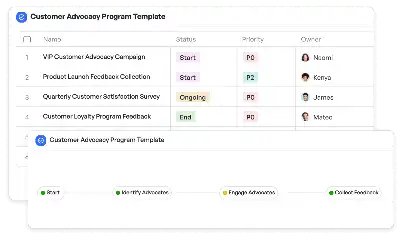Supply Chain Inventory Replenishment Model
Achieve project success with the Supply Chain Inventory Replenishment Model today!

What is Supply Chain Inventory Replenishment Model?
The Supply Chain Inventory Replenishment Model is a strategic framework designed to ensure optimal inventory levels across the supply chain. It focuses on maintaining a balance between supply and demand, minimizing stockouts, and reducing excess inventory. This model is particularly critical in industries such as retail, manufacturing, and logistics, where timely replenishment is essential to meet customer expectations and operational efficiency. By leveraging data-driven insights and predictive analytics, the model helps businesses forecast demand accurately, coordinate with suppliers effectively, and streamline inventory management processes. For example, in a retail scenario, the model can be used to predict seasonal demand spikes and adjust inventory levels accordingly, ensuring that popular products are always available while avoiding overstocking.
Try this template now
Who is this Supply Chain Inventory Replenishment Model Template for?
This template is ideal for supply chain managers, inventory analysts, procurement specialists, and logistics coordinators who are responsible for maintaining efficient inventory levels. It is particularly useful for businesses in industries such as retail, manufacturing, and e-commerce, where inventory management plays a crucial role in operational success. Typical roles that benefit from this model include demand planners who forecast future needs, warehouse managers who oversee stock levels, and procurement teams who coordinate with suppliers to ensure timely deliveries. For instance, a manufacturing company can use this template to streamline the replenishment of raw materials, ensuring uninterrupted production cycles and reducing downtime.

Try this template now
Why use this Supply Chain Inventory Replenishment Model?
The Supply Chain Inventory Replenishment Model addresses specific pain points such as stockouts, overstocking, and inefficient supplier coordination. By using this model, businesses can achieve precise demand forecasting, ensuring that inventory levels align with actual market needs. It also facilitates better supplier communication, reducing lead times and improving delivery reliability. Additionally, the model helps in identifying slow-moving inventory, enabling businesses to optimize stock levels and reduce carrying costs. For example, an e-commerce company can use this model to ensure that fast-moving products are always in stock while minimizing excess inventory for less popular items, thereby improving cash flow and customer satisfaction.

Try this template now
Get Started with the Supply Chain Inventory Replenishment Model
Follow these simple steps to get started with Meegle templates:
1. Click 'Get this Free Template Now' to sign up for Meegle.
2. After signing up, you will be redirected to the Supply Chain Inventory Replenishment Model. Click 'Use this Template' to create a version of this template in your workspace.
3. Customize the workflow and fields of the template to suit your specific needs.
4. Start using the template and experience the full potential of Meegle!
Try this template now
Free forever for teams up to 20!
The world’s #1 visualized project management tool
Powered by the next gen visual workflow engine




